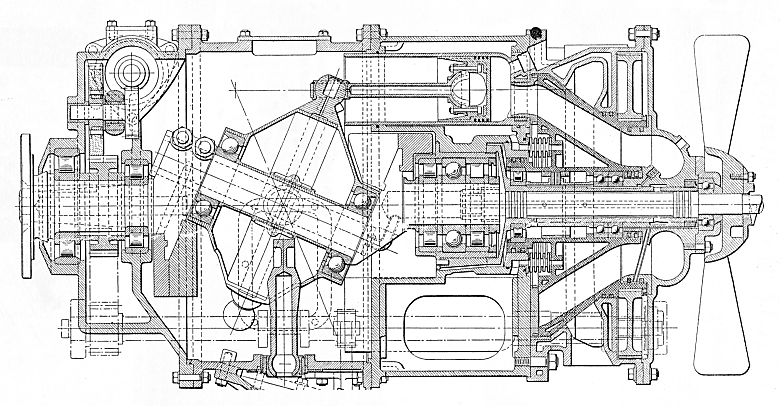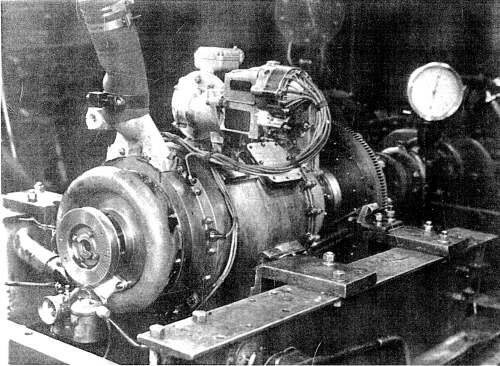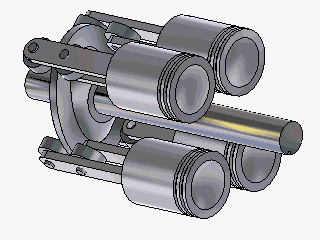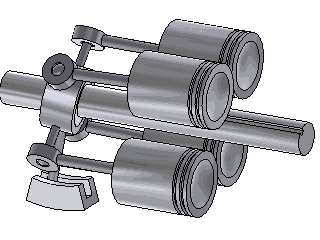-
Posts
5,147 -
Joined
-
Last visited
-
Days Won
1
Content Type
Profiles
Forums
Events
Everything posted by Inspector Morose
-
https://www.aronline.co.uk/concepts-and-prototypes/sports-car-projects-mg-ex234/
-
Ooh, a Hull SAG! (for that was the registration) Nice bonus Autofare 1 ticket machine too. I can still hear the noise they made when the driver changed the fare stage. Jesus Christ, that’s sad even for me.
-
It's one time Reading WJB68T, a Leyland Titan B15. Wondered if it was still around/clinging on to life. Edit: the bus behind is FKM718L, an ex-Maidstone and District Leyland Atlantean/MCW with coach(ish) seating, by the way.
-
Yeah yeah, but all those engines have the cylinders in a row (or a multiple of rows). How about arranging them like in the barrel of a revolver. I bring you the Redrup engine. The idea was not new but Charles Redrup was engaged by Bristol Tramways and Carriage Company to develop his axial engine for use in their bus chassis, the idea being was that the engine took up less space and so could be mounted under the floor, giving more room for passenger accommodation. The engine drove the crank through a ‘wobble plate’ arrangement where the big end of the con-rod was a ball and socket arrangement, driving an inclined plate so converting the forward/backward motion of the piston into a rotating one sort of like this: The engines inlet and exhaust valves a single sleeve that rotated, covering and uncovering ports in the cylinder walls. All very clever and by the early 30s an experimental unit was put into a Bristol bus chassis for testing (known as ‘the black chassis’. When it worked, it was very very good, giving power outputs far in excess of anything Bristol was using at the time. The biggest problem was the sealing of the sleeve valve and over time it became more and more hard to start, often requiring the test bed to be towed a number of miles before the engine could be coaxed into life. Further refinements of the engine were tried and after the replacement of the rotary sleeve valve by more conventional poppet valves, progress was starting to be made. However, a change of management at Bristol saw the end to the experimentation and the engine was never used again in a road vehicle (as far as I know, anyway) Axial engines have found use in aviation where the low torque reaction of this type of engine proved useful when driving a propellor. It was also used to drive torpedoes as the shape of the engine fitted the shape of the torpedo rather well. edit: further reading on axial engines here http://www.douglas-self.com/MUSEUM/POWER/unusualICeng/axial-ICeng/axial-IC.htm#b
-

2022 CCC National (contains Citroens and lots of photos)
Inspector Morose replied to Inspector Morose's topic in AutoShite
-
For some long forgotten reason, I was hijaked last Sunday and taken in a lous and reasonably rapid car to a cricket club that had been opened by John Major. Oh, and there were some old cars there. Some sort of 'do' apparently. I thought it rude of me not to take any pictures as they'd gone to all that trouble. Here are some of them. Well that wasted a bit of your time, didn't it?
-
The trolleybus on the far right is Derby 215 (Brush bodied Sunbeam F4) and i have had the misfortune to drive it at the Black Country Museum. I don’t think it has turned a wheel since the late ‘80s but does still exist. SCH239 is a Sunbeam F4/Roe and sister 237 is now at Carlton Coalville and is immaculate. DRC235 is yet another F4, this time with Willowbrook body with similar 224 still extant.
-
It was essentially the same unit as fitted to the trucks as was fitted to REV01. The main issues were heat build up in the transmission sue to the stop start nature of urban bus work, otherwise it worked fairly well in it. After Leyland’s dismemberment and sale! the CVT gearbox project was spun off into its own company, Torotrak (?) to continue development of this and other projects and REV01 went with them. Eventually it was sold on and was rebuilt as a standard single door 11.3m and entered service for the first time in its life. REV01 was not plucked from the line for the CVT though, its original purpose was in the joint development with Lucas of multiplex wiring systems. The whole loom was ripped out and a prototype three wire loom was installed in its place to control the bus’s systems. This was around 1978 showing just how far ahead of the game Leylands technical team really was.
-
Ask away, that's what we're all here for.
-
Mind if I splaff some bus pics on here? I went to Busfest at Gaydon last Saturday, they were celebrating 50 years of National Express (the brand) and a bit about the Leyland National. Yours truly got invited to be part of a discussion about said integral alongside some of the folk who actually created the thing. Anyway, in no particular order:
-
There used to be a pic doing the rounds of a Birmingham standard on full tilt; they had heavy bodies coupled with soft suspension so used to get quite the lean on. Speaking of Older buses with soft suspension:
-
-
Built for Scarborough and passed to East Yorkshire when they took over the United services there.
-
Still not obscure enough? Jeesh, there's just no pleasing you, is there? Okay, try this: If that doesn't float your boat then I'm done. Goodnight.
-
Not rare enough for you? Well, how about this? THE Ailsa Volvo B55-20, otherwise known as RTO1R the only lowheight Ailsa built.
-
-
That front was very similar to the proposed P7 six cylinder design, I think the surviving P7 prototype has it. Gladys also had a number of features that were to be included on the series 2, including the double bump in the bonnet, the revised instrument binnacle and one or two other features that have slipped my mind.
-
It’s NAG120G the (probably) last surviving Bristol RE with this type of body. Built for the overnight Glasgow - London services. This body was designed originally for the RE and Bristol produced a 12 meter version of the RE for this order (the REMH). Originally powered by a Gardner 6LX, these weren’t the fastest things on the planet but they all intensively used clocking up some fearsome mileages. The body was eventually built on Seddon, Leyland and Volvo chassis and the REMH gained one more order, from United Automobile (with Plaxton bodies). In all, nearly 100 M types were built (on the various chassis) with just one going outside the SBG, to Ribble, built on a Leyland Leopard. After front line service, many ended up scrapped as they couldn’t be cascaded to bus service like their less outlandish forebears plus they were utterly humped.
-
-
I'm not saying nothing....
-
Yeah, a Yellow 720. Basically a transverse engined 72 seat low height double deck built 20 years before the Atlantean. At least one later build 735 (more pronounced curve to the roof) is preserved.
-
Including the wonderfully named Bruce Coach Works. I never worked out whether they ended up a subsidiary of East Lancs or just built bodies using their frames. They certainly didn’t start out as an offshoot to the Blackburn firm, anyway. Another East Lancs-a-like was Neepsend of Sheffield but I’m sure our northern bus correspondent can provide more accurate details than I.





















































































.thumb.png.d3fa56f48d9505c82416838f1afa260c.png)







